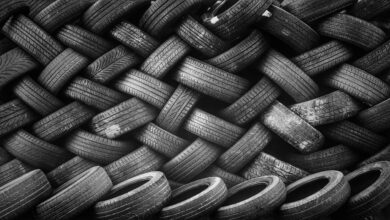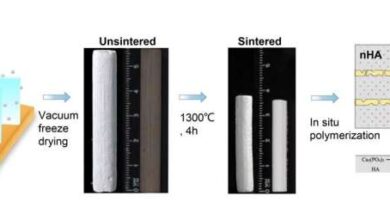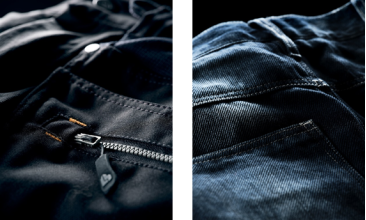For IRANPLAST foreign visitors: The top things to do and see in Tehran

IRANPOLYMER Tehran is the capital of Iran and Tehran Province. With a population of around 8.8 million in the city and 15 million in its larger metropolitan area, Tehran is the most populous city in Iran and Western Asia and it has the second-largest metropolitan area in the Middle East. It is ranked 29th in the world by the population of its metropolitan area. Here we present the topthings to do and see in Tehran.
Tehran Grand Bazaar
Right in the heart of the city, the Grand Bazaar is an essential visit for any tourist in Tehran. With over 10 kilometers of labyrinthine alleyways filled with covered shops, haggling customers, and general commotion, you will find everything from jewelry to carpets and pots and pans for sale here. One of Tehran’s oldest areas, this commercial center is teeming with history and character, and there are some exceptional restaurants dotted around that will introduce more later. Be sure to check out the nearby Jomeh bazaar for antiques, every Friday on Jomhuri Street.
Address: Panzdah-e Khordad Street, Tehran
[EasyDNNGallery|11467|Width|900|Height|900|position||resizecrop|False|lightbox|False|title|False|description|False|redirection|False|LinkText||]
The best restaurant in Grand Bazaar
No trip in Tehran complete without a good lunch in Grand Bazaar. Moslem restaurant is the most famous restaurant in Grand Bazaar that served many traditional food, different types of Kebab and of course delicious Iranian food “Tah chin” is a delicious Iranian rice cake packed with saffron, egg, yoghurt and chicken. Don't miss the chance to try it.
[EasyDNNGallery|11466|Width|900|Height|900|position||resizecrop|False|lightbox|False|title|False|description|False|redirection|False|LinkText||]
National museum of Iran
The National Museum of Iran is filled with an impressive range of treasures and objects from the 30,000 years of human habitation in the Iranian plateau. From Stone Age tools to primitive art, from decorated capitals from Persepolis to coins and pottery, the museum features items from the length and breadth of Iranian history. The building itself, designed in the early 20th century with nods to Sassanian architecture, is one of Tehran’s more interesting modern constructions.
Address: 30th Tir Street, Tehran, phone number: +98 21 6670 2061
[EasyDNNGallery|11464|Width|900|Height|900|position||resizecrop|False|lightbox|False|title|False|description|False|redirection|False|LinkText||]
Golestan Palace
Just a few minutes from the Grand Bazaar, you will find the magnificent Golestan Palace, a 19th century Qajar royal abode. The palace complex consists of 17 structures in total, including reception halls, museums, throne rooms, and royal quarters, and boasts impressive, well-kept gardens too. The intricate tile work, mirrored interiors, symmetrical fountains, and marble thrones demonstrate the pinnacle of Qajar-era architecture, and provide a sense of the level of opulence the monarchs would have enjoyed.
Address: Davar Street, Tehran, +98 21 3311 3335
[EasyDNNGallery|11461|Width|900|Height|900|position||resizecrop|False|lightbox|False|title|False|description|False|redirection|False|LinkText||]
Mount Tochal
Mount Tochal sits in the mountain range to the north of Tehran, with its peak reaching a staggering 3,993 meters. An excellent challenge for mountaineers, trails set off from Darakeh and Velanjak, with tea houses staggered along the way. If you lack the time or inclination for the trek, you can use equipment to will take you all the way up the mountain for a reasonable fee. The top of the mountain also has a small ski line, with equipment available to rent.
[EasyDNNGallery|11460|Width|900|Height|900|position||resizecrop|False|lightbox|False|title|False|description|False|redirection|False|LinkText||]
Carpet Museum of Iran
Located in Tehran , beside Laleh Park, and founded in 1976, the Carpet Museum of Iran exhibits a variety of Persian carpetsfrom all over Iran, dating from the 16th century to the present.
The museum's exhibition hall occupies 3,400 square meters (10,200 ft²) and its library contains 7,000 books.
[EasyDNNGallery|11469|Width|900|Height|900|position||resizecrop|False|lightbox|False|title|False|description|False|redirection|False|LinkText||]
The museum was designed by architect Abdol-Aziz Mirza Farmanfarmaian. The perforated structure around the museum's exterior is designed both to resemble a carpet loom, and to cast shade on the exterior walls, reducing the impact of the hot summer sun on the interior temperature.
Niavaran Complex
The complex traces its origin to a garden in the region of Niavaran, which was used as a summer residence by Fath-Ali Shah of the Qajar Dynasty.
A pavilion was built in the garden by the order of Naser ed Din Shah of the same dynasty, which was initially referred to as Niavaran, and was later renamed Saheb Qaranie. The pavilion of Ahmad Shah Qajar was built in the late Qajar period.
[EasyDNNGallery|11457|Width|900|Height|900|position||resizecrop|False|lightbox|False|title|False|description|False|redirection|False|LinkText||]
During the reign of the Pahlavi Dynasty, a new mansion named Niavaran was built for the imperial family of Mohammad Reza Pahlavi. All of the peripheral buildings of the Saheb Qaranie, with the exception of the Ahmad Shahi Pavilion, were demolished, and the present-day structures were built to the north of the Saheb Qaranie. The Ahmad Shahi Pavilion was then used as an exhibition center for presents from world leaders to the Iranian monarchs
Sa'dabad Complex
The Sa'dabad Complex is a 300 hectare complex built by the Qajar and Pahlavimonarchs, located in Shemiran, Greater Tehran, Iran. Today, the official residence of the President of Iran is located adjacent to the complex.
The complex includes more than 180 hectares of natural forest, streets, qanats, galleries, and museums
[EasyDNNGallery|11465|Width|900|Height|900|position||resizecrop|False|lightbox|False|title|False|description|False|redirection|False|LinkText||]
Abgineh Museum of Tehran
The Glassware and Ceramic Museum of Iran or simply Abgineh Museum is located at 30 Tir Street (formerly known as Ghavam Al Saltaneh Street), in Tehran, Iran.
[EasyDNNGallery|11463|Width|900|Height|900|position||resizecrop|False|lightbox|False|title|False|description|False|redirection|False|LinkText||]
Ferdows Garden
Ferdows Garden is a historical complex located in the district of Tajrish in Shemiran (northern Tehran), Iran.
The complex dates back to the reign of the Qajar dynasty, and includes a mansion which houses the Cinema Museum of Iran since 2009
[EasyDNNGallery|11468|Width|900|Height|900|position||resizecrop|False|lightbox|False|title|False|description|False|redirection|False|LinkText||]
Masoudieh Palace
Built in 1879 for Naser al-Din Shah's son, who was also the governor of Esfahan, as his residence in Tehran, this lovely building and garden is in the process of restoration. Recently there was a cafe operating in the dining hall, but it was closed at the time of writing. It's still worth visiting for the building's beautiful decoration and peaceful grounds
[EasyDNNGallery|11458|Width|900|Height|900|position||resizecrop|False|lightbox|False|title|False|description|False|redirection|False|LinkText||]
National Botanical Garden of Iran
National Botanical Garden of Iran is a Botanical Garden in Tehran, Iran. Its area is about 150 hectares and is planned to be the main center for horticulture and plant taxonomy in Iran. A herbarium of Iranian plants (TARI) is gradually being built up and now consists of some 160,000 numbers. Also there are gardens of non-Iranian plants such as Himalayan, American, Japanese, African, and Australian.[1]
The garden also contains an arboretum, Six lakes, hills (to represent the Alborz and Zagros mountains and Himalayas), rock garden, a waterfall, a wetland, desert plants areas, a salt lake and a wadi, a river about 1 km long, systematic area, fruit garden, picnic area with some pavilions and other facilities. The botanical and horticultural library has more than 11,000 volumes
[EasyDNNGallery|11459|Width|900|Height|900|position||resizecrop|False|lightbox|False|title|False|description|False|redirection|False|LinkText||]
Tehran Museum of Contemporary Art
Tehran Museum of Contemporary Art, also known as TMoCA, is among the largest art museumsin Iran. It has collections of more than 3000 items that include 19th and 20th century's world-class European and American paintings, prints, drawings and sculptures. TMoCA also has one of the greatest collections of Iranian modern and contemporary art.
The museum was inaugurated by Empress Farah Pahlavi in 1977, just two years before the 1979 Revolution.[1] TMoCA is considered to have the most valuable collections of modern Western masterpieces outside Europe and North America
[EasyDNNGallery|11462|Width|900|Height|900|position||resizecrop|False|lightbox|False|title|False|description|False|redirection|False|LinkText||]
Tabiat Bridge
The Nature Bridge or Tabi'at Bridge is the largest pedestrian overpass built in Tehran, Iran. The 270-metre (890 ft) bridge connects two public parks—Taleghani Park and Abo-Atash Park—by spanning Modarres Expressway, one of the main highways in northern Tehran The word tabiat means “nature” in the Persian language The bridge was designed by Leila Araghian. It has won several awards, including the Popular Choice Prize for Highways & Bridges from the Architizer A+ Awards, a global architectural competition based in New York
[EasyDNNGallery|11470|Width|900|Height|900|position||resizecrop|False|lightbox|False|title|False|description|False|redirection|False|LinkText||]






